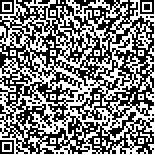下载中心
优秀审稿专家
优秀论文
相关链接
摘要

地表反照率是影响地表能量收支平衡的决定性参数之一,精确反演地表反照率需要考虑地表各向异性反射特征。本文尝试以双向反射分布函数BRDF原型为地表各向异性反射的先验知识,通过单方向反射率反演地表反照率。首先根据地面实测及MODIS多角度反射率数据对反演方法进行分析和精度评价,然后借助MODIS BRDF产品统计出研究区的主导BRDF原型,并联合环境一号卫星(HJ-1)单方向反射率数据反演30 m地表反照率,最终将结果与地表实测数据进行比较。结果表明:BRDF原型对BRDF的变化进行了约束,且能够适用于几十米尺度的遥感数据反照率的反演;不同级别的各向异性反射特征的分布是不均一的,借助于主导BRDF原型能够使大部分样本的地表反照率满足精度要求;利用研究区MODIS BRDF产品统计得到的主导BRDF原型为先验知识,通过HJ-1数据反演得到的地表反照率与地表实测反照率有较高的一致性,而朗伯假定条件下的反照率高于实测结果。本文算法简单高效,可为产生全国范围的中高分辨卫星反照率产品提供有价值的算法参考。
Land surface albedo is a critical physical variable that affects the energy budget in land-atmosphere interactions. Precise retrieval of albedo must consider the reflectance anisotropy, which is the general characteristic of surface reflectance. Six spectral Bidirectional Reflectance Distribution Function (BRDF) archetypes have been previously distilled from a single year of the Moderate Resolution Imaging Spectroradiometer (MODIS) operational BRDF/albedo V005 product (MCD43) over global Earth Observing System Land Validation Core Sites. This study attempted to analyze the distribution of MODIS BRDF anisotropy with the aid of MODIS AFX and BRDF archetypes. A method that attempts to convert surface directional reflectance to albedo with primary BRDF archetypes, which were obtained statistically from concurrent MODIS BRDF product, was introduced. Results were compared with routine MODIS BRD/albedo product and ground observations.The semiempirical kernel-driven BRDF model was used in this study. Six spectral BRDF archetypes, which were taken as prior knowledge of the reflectance anisotropy, were used to fit directional observation to adjust the magnitude of reflectance and to convert directional reflectance into albedo. First, multiangular ground and MODIS reflectance were used to evaluate the precision and applicability of MODIS BRDF archetype in different spatial scales. Second, the distribution characteristics of BRDFs were analyzed with the assistance of the BRDF archetype. The dominant BRDF archetype that can represent the reflectance anisotropy of most pixels over the study surface can be extracted from a concurrent MODIS BRDF product through statistic method. Finally, the dominant BRDF archetype and HJ directional reflectance were combined to generate 30 m resolution land surface albedo. The retrievals were compared with ground observations. Results showed that MODIS BRDF archetypes represent the general variability of surface reflectance anisotropy that can be used to retrieve albedo at both tens of meters and MODIS scale. The distribution of BRDF is unequal, and the primary BRDF archetype that was obtained statistically can represent the reflectance anisotropy of 70% pixels. Albedos retrieved from the primary BRDF archetype and driectional reflectance meet the accuracy requirements in routine albedo retrievals. High consistency exists between ground observations and HJ albedos based on primary BRDF archetype, which was extracted from the MODIS BRDF product, whereas the albedos under the assumption of a Lambertian surface are greater than those from the ground observations.BRDF archetypes provide a standard to distinguish the characteristic of reflectance anisotropy and to provide a new way to evaluate the effect of reflectance anisotropy on albedo. The distribution of reflectance is unequal, and a dominant BRDF archetype that can represent most pixels over a study area exists. Given this characteristic of BRDF, BRDF archetypes may potentially be used for surface albedo retrievals from directional reflectance. The method employed in this paper considers the reflectance anisotropy properly and can obtain a high accuracy albedo from directional reflectance. The method can be performed conveniently and provide a key reference to retrieve national high and medial resolution albedos from directional satellites and/or airborne observations.

